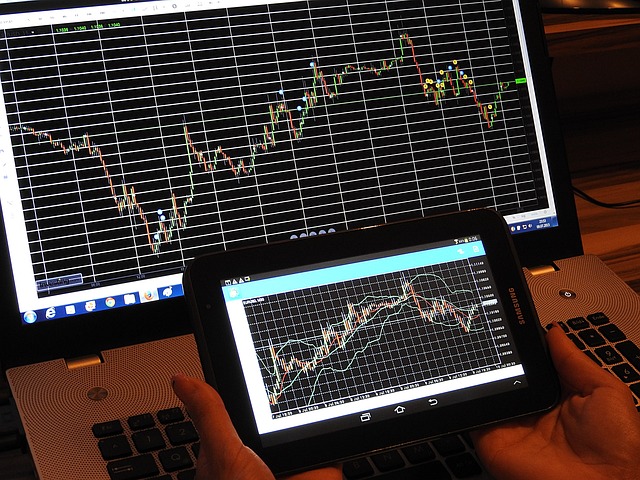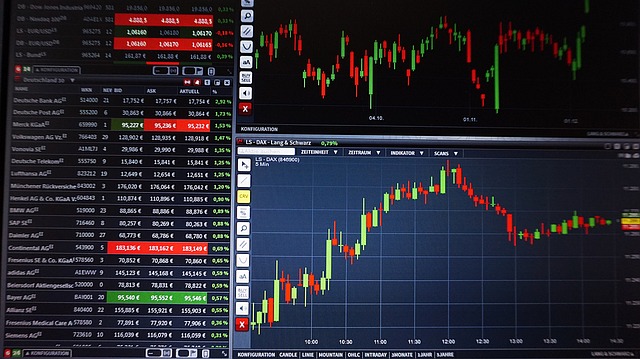Understanding AI Trade Bots: Revolutionizing the Financial Landscape
Author: Jameson Richman Expert
Published On: 2024-08-07
Prepared by Jameson Richman and our team of experts with over a decade of experience in cryptocurrency and digital asset analysis. Learn more about us.
The evolution of technology has dramatically altered the way we interact with financial markets. Among the myriad advancements, Artificial Intelligence (AI) trade bots stand out as one of the most influential tools available to traders today. These sophisticated algorithms are engineered to automate trading decisions based on complex data analysis, offering numerous advantages and some drawbacks. In this article, we will delve into the intricacies of AI trade bots, exploring their functionality, benefits, risks, and the future of trading as influenced by AI.

What is an AI Trade Bot?
At its core, an AI trade bot is a software application that uses artificial intelligence algorithms to determine when to buy or sell financial assets, such as stocks, cryptocurrencies, or forex. These bots continuously analyze market data, execute trades, and optimize trading strategies based on predefined parameters and real-time trends.
How AI Trade Bots Work
AI trade bots operate through a series of steps that involve data collection, analysis, decision-making, and execution:
- Data Collection: The first step involves gathering vast amounts of market data, including price movements, trading volume, historical trends, and relevant news that may impact asset prices.
- Data Analysis: The bot utilizes machine learning techniques to analyze the collected data. This may involve pattern recognition, sentiment analysis, and predictive modeling to generate actionable insights.
- Decision-Making: Based on its analysis, the AI trade bot makes informed decisions regarding when to enter or exit trades. These decisions can be influenced by various factors, including market volatility and predefined risk parameters.
- Execution: Once a decision is made, the bot places trades automatically. This speed of execution is one of the key advantages of using AI trade bots, as they can execute trades within milliseconds.
Types of AI Trade Bots
While all AI trade bots share a common goal of automating trading, they can be classified into different types based on their strategies:
- Market Making Bots: These bots provide liquidity by continuously placing buy and sell orders, profiting from the bid-ask spread.
- Trend Following Bots: These bots analyze market movements and aim to capitalize on established trends, entering long positions in an upward trend and short positions in a downward trend.
- Arbitrage Bots: These bots exploit price discrepancies across different markets or exchanges, buying low in one market and selling high in another.
- Sentiment Analysis Bots: By analyzing news articles, social media posts, and other forms of public sentiment, these bots determine how public mood may influence asset prices.
Benefits of Using AI Trade Bots
The integration of AI trade bots into trading strategies offers several key benefits:
1. Enhanced Efficiency and Speed
AI trade bots can process enormous amounts of data far more quickly than a human trader. This speed allows them to make decisions and execute trades in real-time, taking advantage of fleeting market opportunities. In my opinion, this efficiency could be the difference between a profitable trade and missing out on a significant opportunity.
2. Emotionless Trading
One of the most pronounced advantages of AI trade bots is their ability to trade without emotional interference. Human traders are often driven by fear or greed, which can cloud judgment and lead to suboptimal trading decisions. Conversely, bots strictly follow the rules set in their algorithms, offering a systematic approach to trading.
3. Historical Data Analysis
AI trade bots are capable of analyzing large datasets efficiently. This capacity allows them to make informed predictions based on historical trends, a practice that is vital in a highly volatile and dynamic market. In an age of data, leveraging historical information is remarkably beneficial.
4. Diversification
Traders can employ multiple AI trade bots to manage various assets simultaneously. This diversification can mitigate risks associated with volatility in a single market, allowing for a more balanced approach to trading. Personally, I advocate for diversification as a foundational principle in both investing and trading.
Risks and Challenges of AI Trade Bots
Despite the numerous advantages, using AI trade bots is not without its risks and challenges:
1. Market Unpredictability
While AI trade bots are designed to analyze and predict market movements, no algorithm can predict the market with absolute accuracy. Sudden shifts in the market due to geopolitical events or economic crises can render AI predictions irrelevant. In my view, it's essential to maintain a level of human oversight over bot operations to address unforeseen market conditions.
2. Technical Failures
As with any technology, AI trade bots are susceptible to glitches and software malfunctions. An error in the code could lead to significant financial losses, highlighting the importance of rigorous testing and monitoring.
3. Dependency on Historical Data
AI trade bots often rely heavily on historical data to inform their trading strategies. However, past performance does not guarantee future results. Markets can undergo drastic changes, and bots may struggle to adapt quickly if their strategies are too rigid. In my opinion, continuous adjustment and learning are vital components for any trading strategy using AI.
4. Regulatory Concerns
The increasing use of AI in trading raises regulatory questions, particularly regarding transparency and accountability. Traders utilizing AI bots may face scrutiny from financial authorities as regulations evolve to keep pace with technological advancements.

The Future of AI Trade Bots
The trajectory of AI trade bots is closely linked to the broader advancements in artificial intelligence and machine learning technologies. As algorithms become more sophisticated, we can expect to see:
1. Increased Adoption Across Markets
As trading becomes more technologically driven, AI trade bots will likely see increased adoption among both retail and institutional investors. The accessibility of these tools will democratize trading, allowing more individuals to participate in financial markets.
2. Greater Integration with Big Data
The fusion of AI trade bots with big data analytics will enhance their ability to process vast datasets in real-time. Improved analytics will lead to better decision-making and a deeper understanding of market dynamics. I firmly believe that this integration will redefine the trading landscape in the coming years.
3. Evolution of Trading Strategies
AI trade bots will continue to evolve, adapting to new market environments and developing more nuanced trading strategies. This will likely lead to a shift in traditional trading paradigms as bots introduce innovative approaches to asset management.
Conclusion
AI trade bots represent a paradigm shift in how trading is conducted in financial markets. The automation, efficiency, and analytical capability they offer can enhance trading strategies and profitability. However, it's essential for traders to balance the use of bots with human judgment and oversight to navigate the complex and unpredictable nature of the markets. As technology advances, the future of trading will undoubtedly be shaped by these intelligent systems, offering exciting possibilities alongside potential challenges.
In summary, while I have a deep appreciation for the capabilities of AI trade bots, I also hold a cautious view about their limitations. The best outcomes in trading often come from a synergistic approach that integrates both human insight and the analytical power of AI, creating dynamic strategies that can adapt and thrive in ever-changing market conditions.